From khadi to khand to kala cotton, the upcoming Lakme Fashion Week Spring/Summer 2015 will bring a wide variety of Indian textiles to the runway, albeit with a contemporary twist

India's textiles are as varied and gorgeous as the landscape itself. No Indian state is without a rich heritage of indigenous textiles kept alive by generations of families. While the history of homespun cotton dates back to the Harappan civilisation, it is the geography of the country that has kept it relevant through the ages.
Ask anybody who likes their fashion statement to lead with 'comfort' — cottons and linens, with their wide variety of weaves are not only easy to wear, but also perfect for the climate of the subcontinent — especially its sweltering summers.
ADVERTISEMENT
Little wonder then, that even the fashion industry is giving a nod to traditional textiles. From grandma's trunk to trunk shows and now to the runway, it has been a long way, but the journey of the Indian yarn has only just begun.
Kiran Uttam Ghosh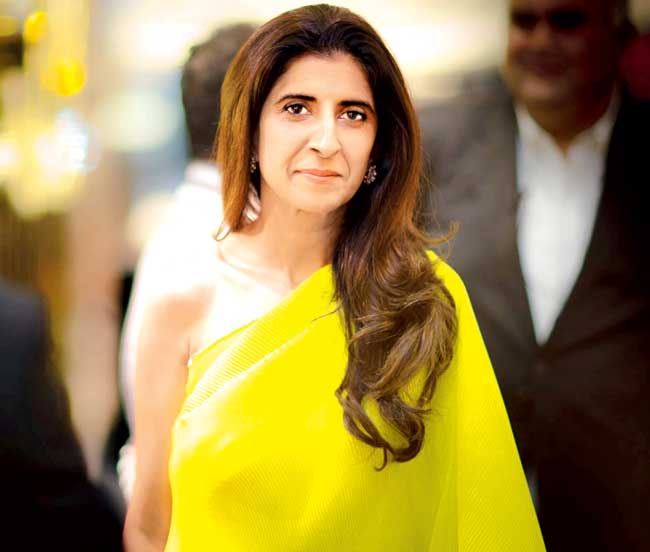
Kiran Uttam Ghosh, trained under British designer Jasper Conran, has been part of Lakme Fashion Week since its inception in 2000. Her clothes are understated, with silhouettes and textures that defy categorisation.
The Kolkata-based designer, who has footprints in New York, Hong Kong and six other countries, is known to infuse traditional Indian designs with the zest of international influence to create her own signature style. At the upcoming fashion week, Ghosh will showcase collections that are "conformist, non-conformist and somewhere in between".
"I have used handloom Maheshwaris, Bengal Dhakai and Tnt weaves, Chanderi, Benarsi brocades and kinkhwabs, delicate phulia and ikkat. I offset these with georgette, crepe, jersey and pleated (heat-pressed) fabric and juxtapose them with edgier silhouettes," explains Ghosh. The result is racer-back ganjis, white shirts, heat-pressed pleated dresses, trousers and saris in handloom fabrics.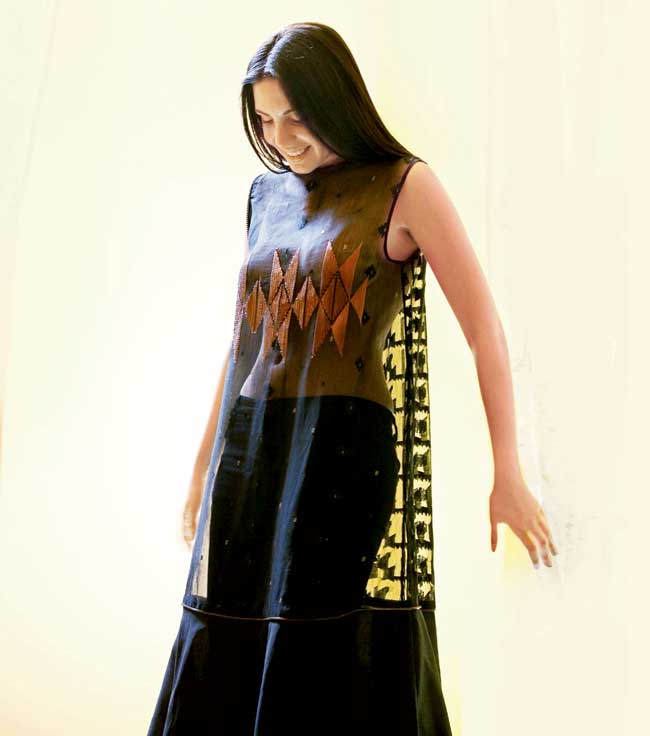
Kiran Uttam Ghosh's collection will see ample use of exquisite fabrics like Dhakai, Maheshwari and Chanderi
Most people think heavy Indian fabrics are ideal only for weddings and other formal occasions. With this collection, I wish to display modern, everyday wear ensembles for today's woman. For example, a poncho made of Maheshwari fabric, layered with a racer-back dress," elaborates Ghosh.
She often feels there is a huge premium attached to indigenous weaves, especially Indian, across the world, but we, in India, tend to take this legacy for granted. "We definitely need more platforms that encourage traditional weavers and bridge the gap between them and designers, retailers and technology," says Ghosh.
Deepika Govind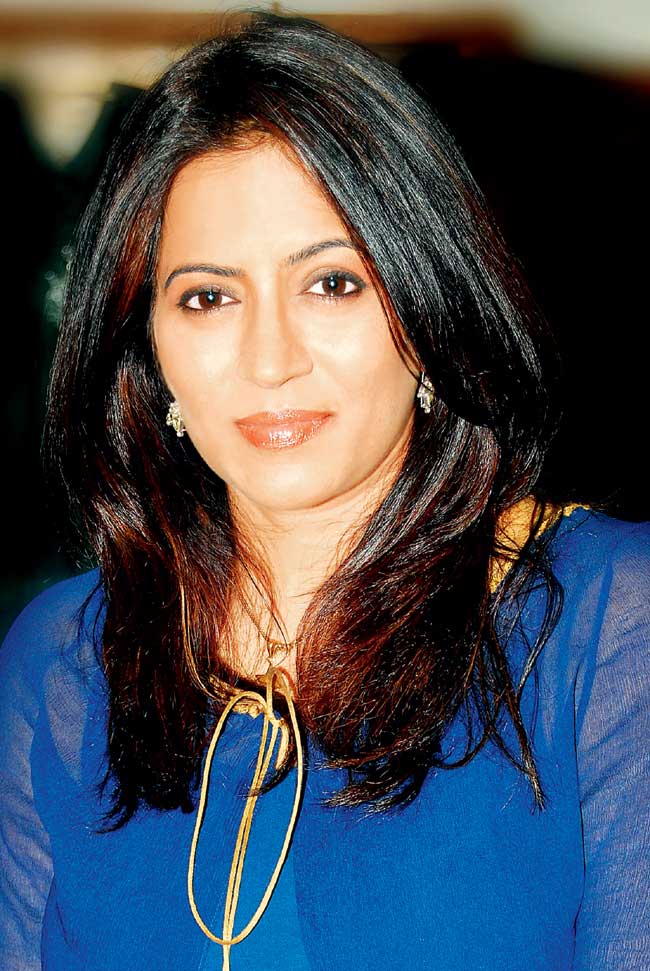
Known as a pioneer in fashion circles, Govind uses fashion as a medium to voice her concern for dying Indian traditions, crafts and the environment. In fact, she spells out her design philosophy, literally — it is 'Fashion for the Earth' (E=Elements, A=Art, R=Revolution, T=Technology and H=Human Hand).
She strives to strike a comfortable balance of Eastern crafting and Western construction in her designs. From reinventing the Ilkal cheque-red weaves, creating sarees with pure gold threads on crepe de chine, blending khadi yarn with tencel, making silk out of corn fibre, using Eri silk to create an alternative to denim, to making soyabean knit tees, her repertoire is replete with innovation.
Her new collection, The Yogi Who Loved Blue, draws its inspiration from the remote mystical terrains of Kutch as well as the handcrafted tribal ornaments and long dresses of the Jat community, blouses of the Rabari community and long-belted dresses of the khatris.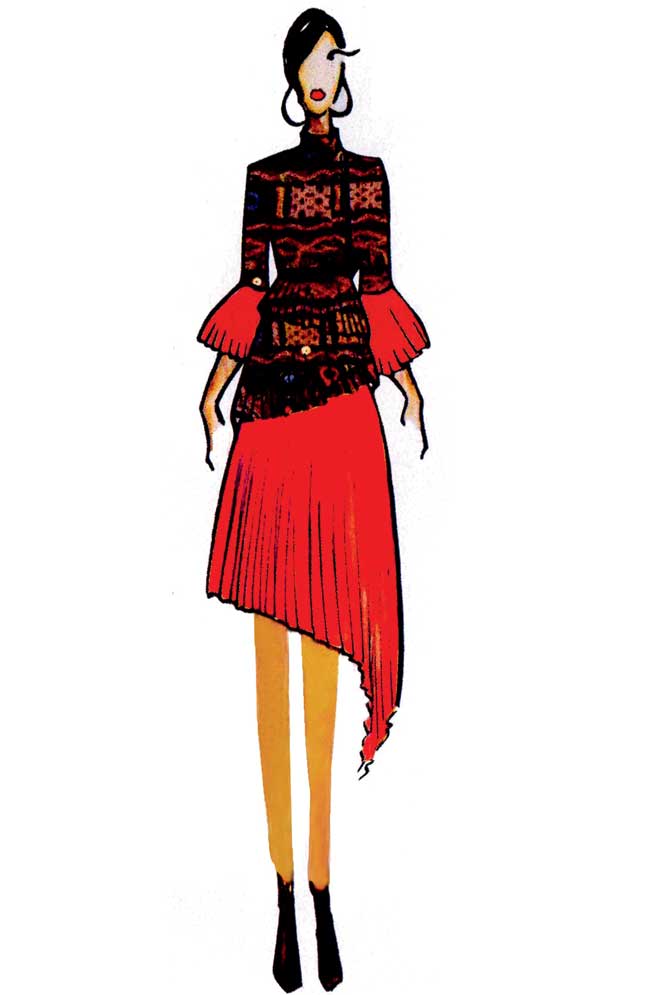
Deepika Govind has brought kala cotton from the arid Rann of Kutch and given it a Western makeover
"This is my way of paying homage to the kala cotton — an indigenously grown cotton of Kutch which is as coarse as the earth it is grown from. What furthers the distinctiveness of this collection is the use of farek and gussets along with bandhni, tie and dye, ajrakh (a 2,000 year old print craft in organic dyes) and Rabari embroideries. I have used neel blues, organic kora colours, Rudraksh brown, desert browns, burgundy, mustard and mineral reds for this collection," the designer reveals.
Shruti Sancheti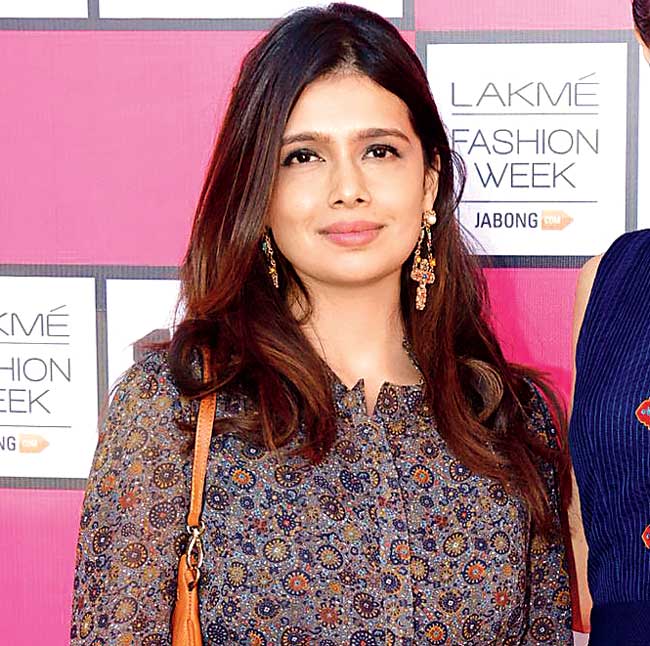
Shruti Sancheti started her own eponymous fashion label in 2009. She strongly believes in promoting Indian sensibilities through her designs. With an academic background in textile designing, she has time and again experimented with Indian weaves and embroideries.
From creating an entire collection inspired by the Swadeshi Movement that aimed at reviving indigenous handloom industry, to a collection paying tribute to different weaves of Maharashtra, especially the Paithani, this Nagpur-based designer has worked extensively towards the revival of traditional Indian weaves.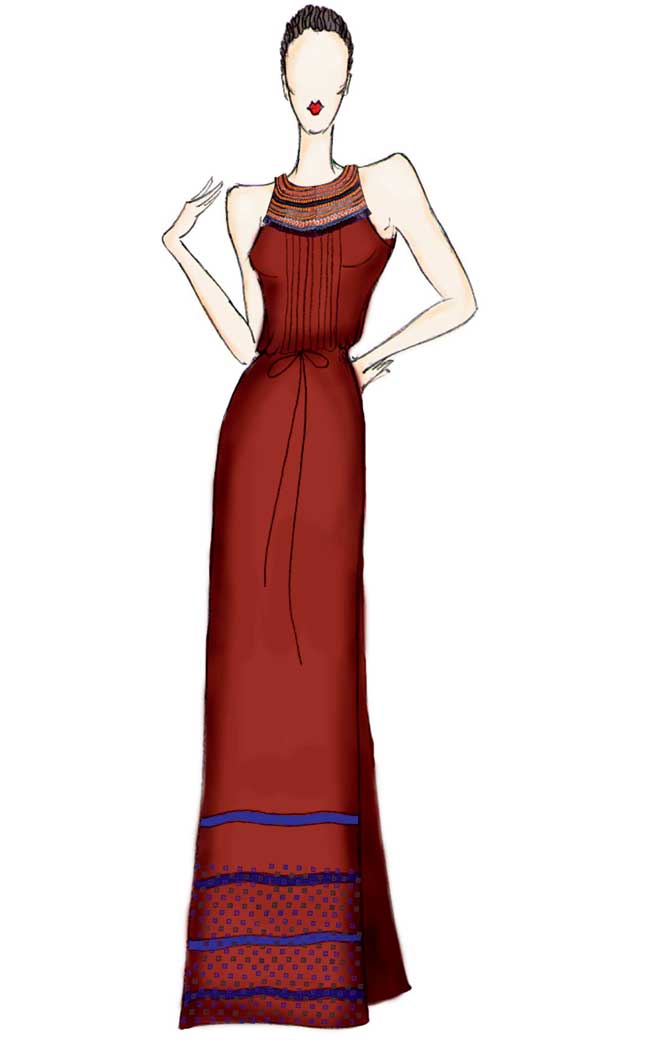
Shruti Sancheti has incorporated leheriya, Heer-Bharat embroidery and Mughal block prints into her flowy silhouettes
Sancheti's upcoming collection, Nomadistaan, is inspired by the idea of the global woman trapped in the urban confines. The collection is an amalgamation of various printing techniques, tribal crafts and woven textiles translated into contemporary fusion silhouettes and styles.
"This collection is very carefully crafted, although it looks free-flowing. Sharp tailoring is used in form of jackets, boleros, dresses, spliced skirts and culottes along wit free flowing silhouettes like flowing maxis, midis, slouchy pants and pleated long skirts. The USP of the collection is the tribal crafts from the Thar region along with Mughal influences.
We have used Heer Bharat embroidery from Gujarat, Kaleen (carpet) embroidery from Kashmir, Banjara embroidery along with tie and dye, leheriya and Mughal block prints," elaborates Sancheti.
Shon Randhawa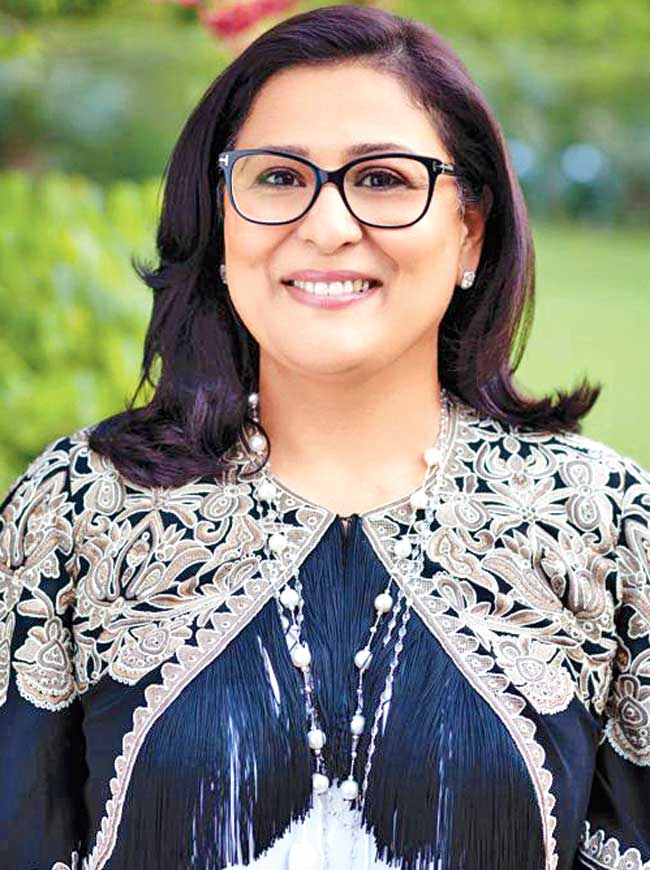
Think Victorian lace blended with Indian embroidery to create a modern shirt-dress, relaxed block-printed kaftans with glamorous glass work and high-and-low proportions layered together, creating an unexpected balance and you have what designer Shon Randhawa has in store for this season of LFW.
"It is my tribute to the '70s —fashion that is fearless, open, free, and bohemian abandon. Nostalgic bell bottoms, balloon sleeves and kerchief drapes walking with skimmed, cropped shapes and a mélange of translucent tulles, lace and sheer silk standing with suede, wool and crisp cotton, form a unique tapestry of texture in this designer's mind.
These are then layered with myriad traditional embellishments; Chikan, Kantha and Gara embroideries mingling with hand block prints, oriental tie-dye, patchwork, appliqué and leather trimmings, while evening wear coming alive with mirror-work, lamé and metallic mukesh speckles. "As Oscar De La Renta says, 'Fashion always has to move forward'. I, too, try to use heritage crafts and make them relevant to the present day," says Randhawa.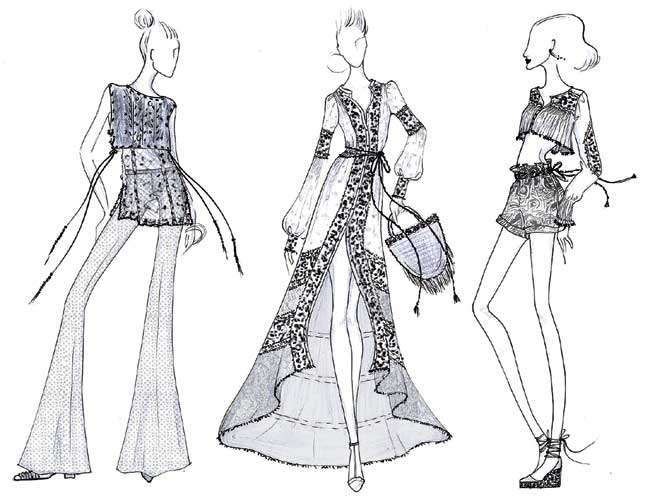
Shon Randhawa has used hand block prints, oriental tie-dye, patchwork and appliqué in a collection that is a throwback to the '70s
Armed with twin degrees, one from London College of Fashion and the other from National Institute of Fashion Technology, New Delhi, she co-founded Patine in January 2007 with the aim to create timeless garments for a global audience using the heritage crafts of India. Fresh, contemporary styles stand out with vintage embellishments in her designs — something to look forward to at the LFW.
Vaishali Shadangule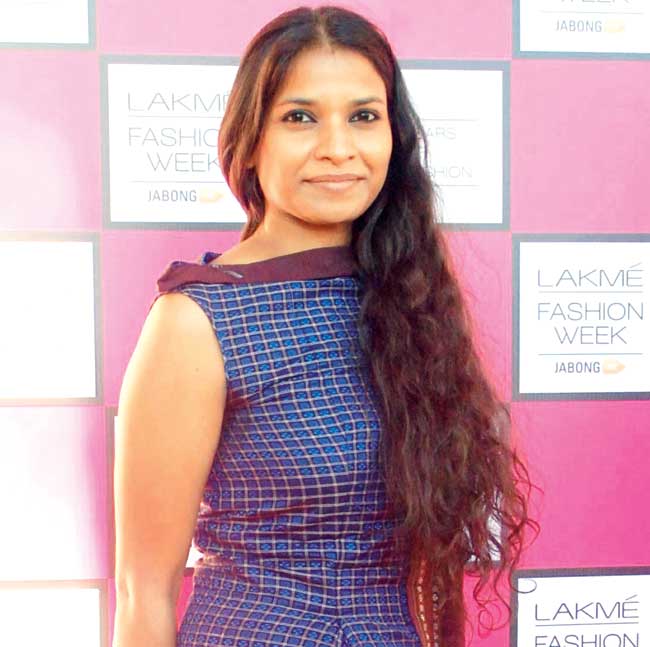
Born in a small town, Vidisha, in Madhya Pradesh, Shadangule ran off from home to chase her dreams only to return to her roots in her choice of fabrics.
Shadangule made her LFW debut in 2011 with her summer resort collection Virus Free, where she paid a tribute to Chanderi, a light-weight handwoven silk from her hometown. Today she has two stores in Mumbai and one in Delhi.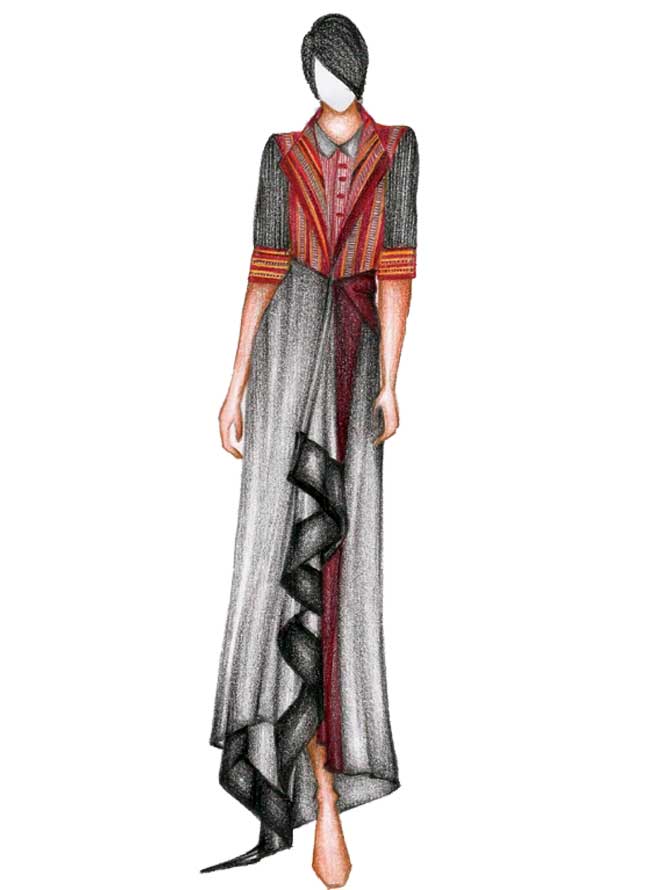
Vaishali Shadangule uses traditional khand fabric on western silhouettes
Her clothing line, Vaishali S, encompasses contemporary and traditional Indian wear, Indo-Western and Western wear and is rooted in Indian textiles.
"The collection follows the journey of the thread to becoming a beautiful handwoven textile. I have taken inspiration from the traditional performing art, Behrupia (two-faced). For me a thread is a 'behrupia', which keeps changing its forms on different looms and is in disguise as a new textile every time. And the irony is that just like the Behru nous fabrics," says Shadangule.
Anavila Misra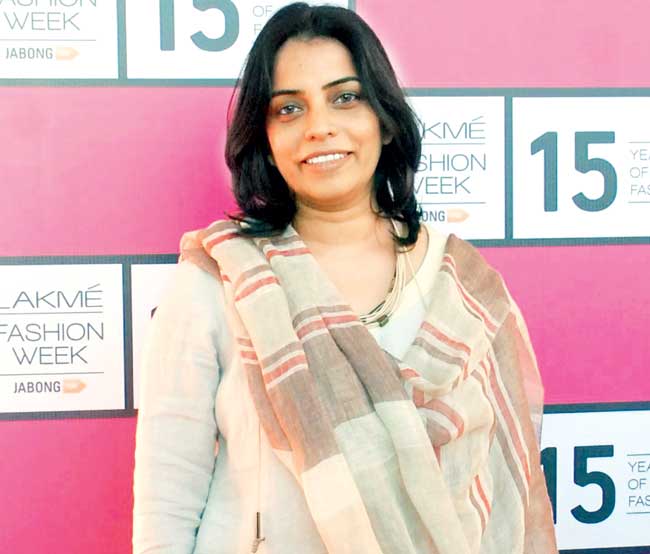
Anavila Misra is just two seasons old at LFW, yet her signature sarees — made of organic linen in natural or indigo tones, with contrast selvedge and geometric, grid-like patterns — are already quite the rage.
To fashion these light-weight fluid sarees, she worked closely with a few weavers from Phulia, West Bengal, and in 2009 came up with 120-count yarn of loose and open weaves, instead of the regular 60-count yarn. Today, Misra has a line of organic handwoven sarees and separates, which are created by artisans in the craft clusters of Bihar, Jharkhand and Bhuj.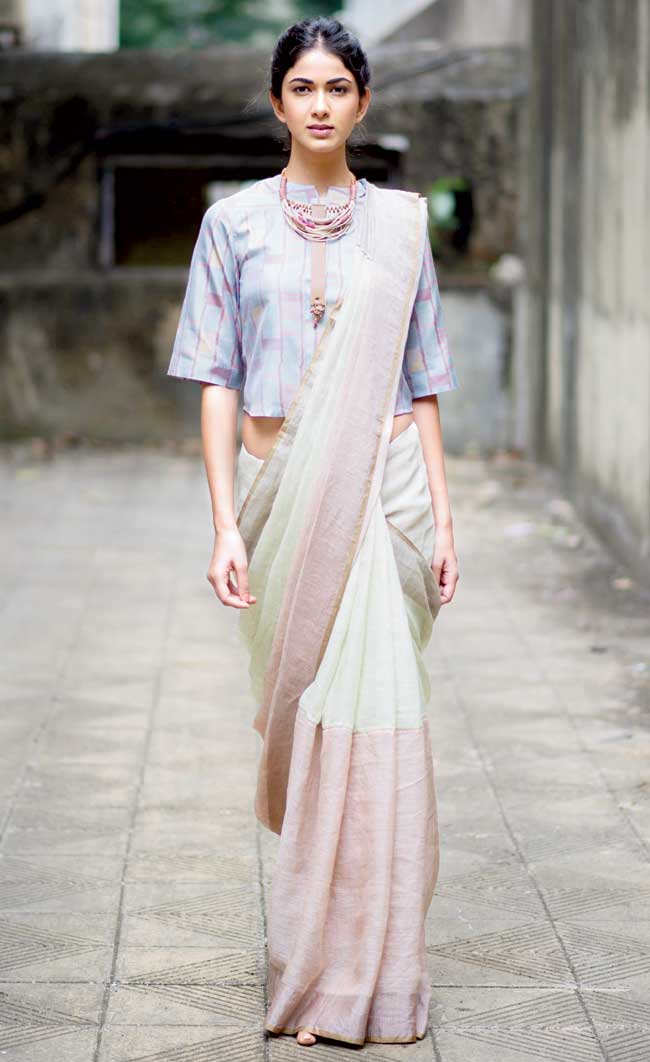
Anavila has used jamdani, batik and hand embroideries on natural fabrics
Her new collection, A Summer Stroll, is made up of 100 per cent natural fibres. "All the techniques we have used are craft based — be it jaamdani, batik, khatwa or hand embroideries. We have tried to juxtapose man-made elements with natural/ geometric floral ones by fusing supposedly opposite techniques. So, the collection has both fluidity and masculinity.
I have used linen, khadi and cotton mul yarns which are perfect for any summer resort collection. I am introducing stitched garments for the first time. It is very important for me to work on commercially viable fashion. Eventually the fashion has to trickle down from the runway to the stores and then to wardrobes," emphasises Misra.
 Subscribe today by clicking the link and stay updated with the latest news!" Click here!
Subscribe today by clicking the link and stay updated with the latest news!" Click here!







